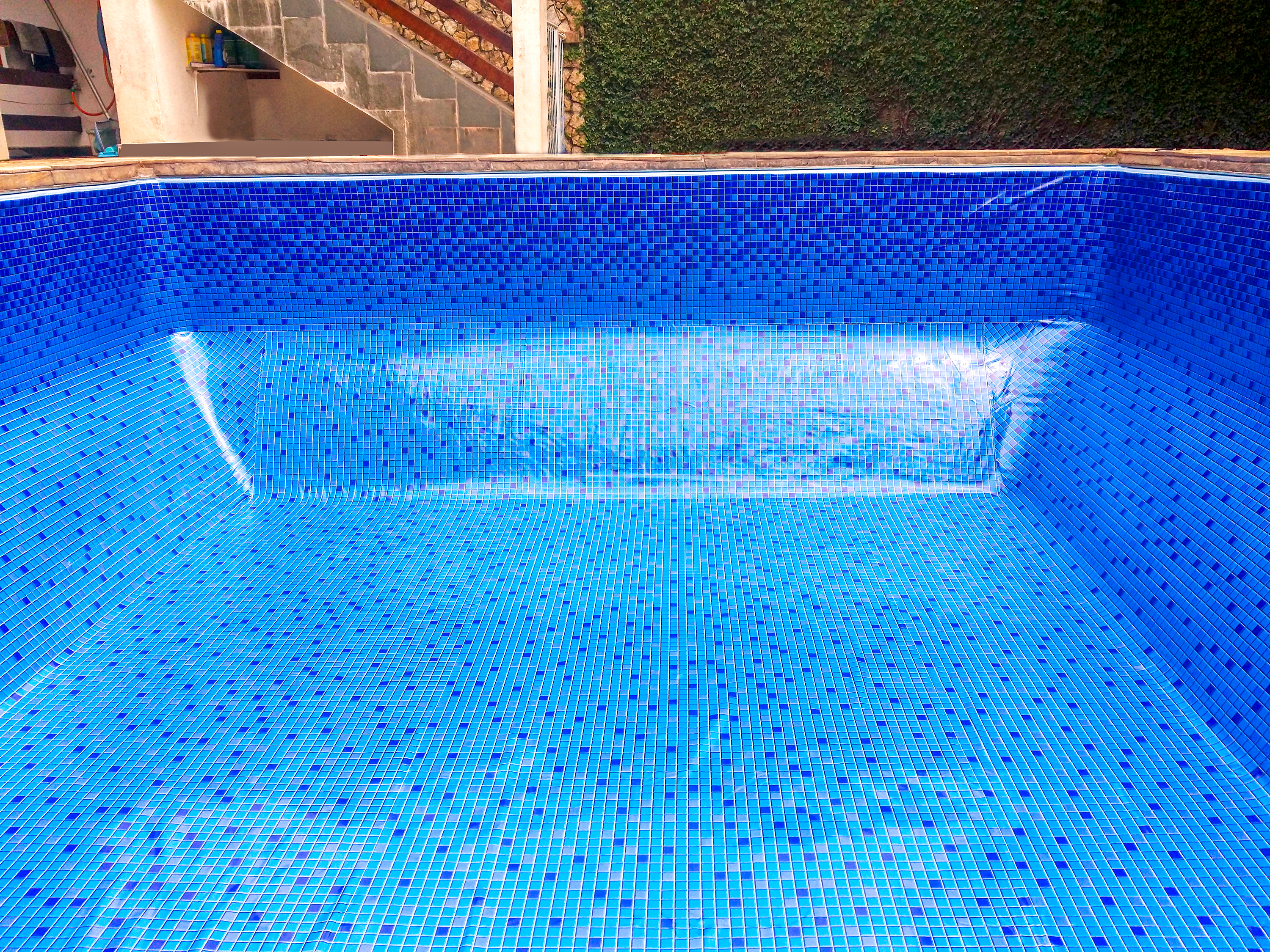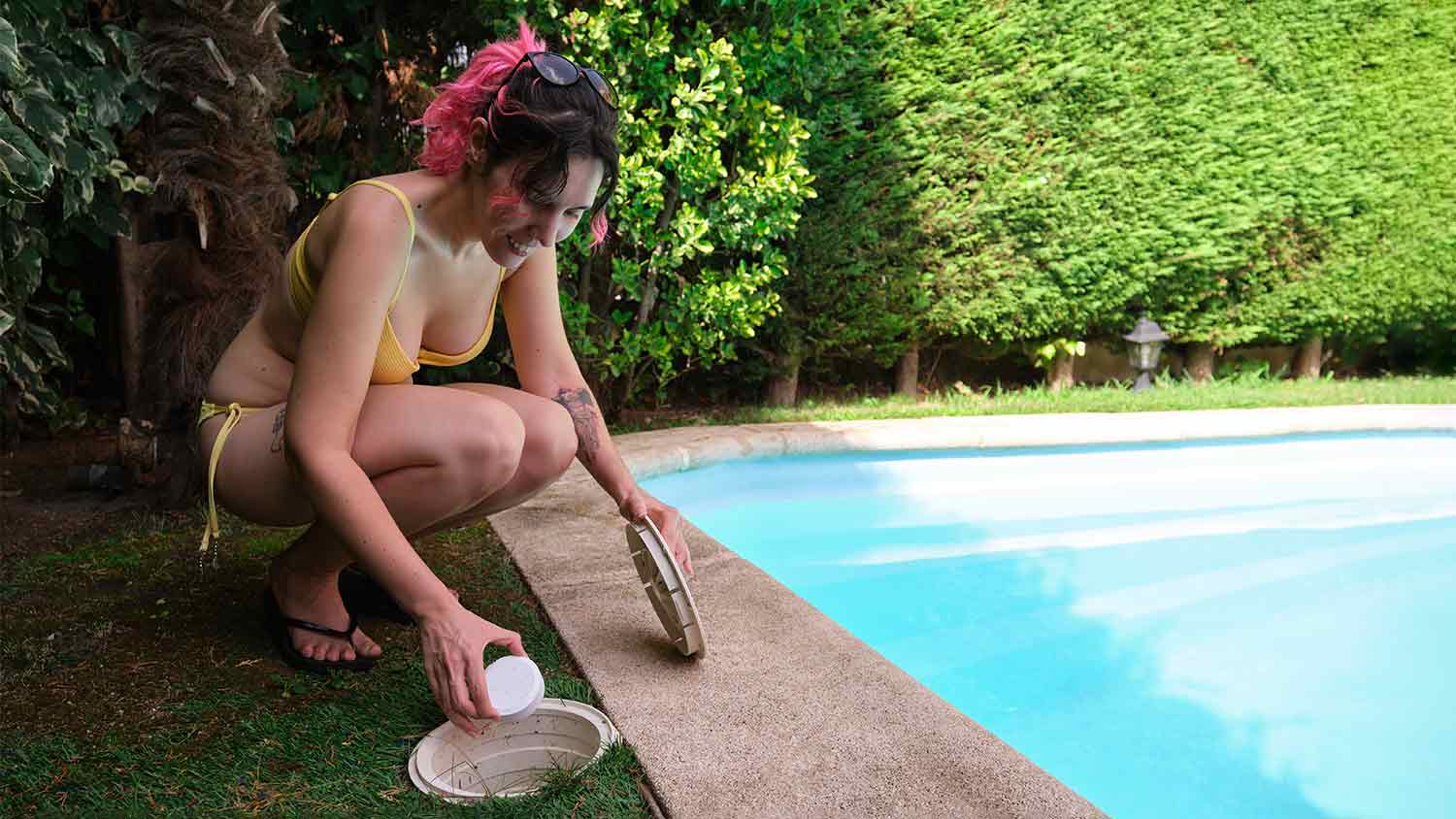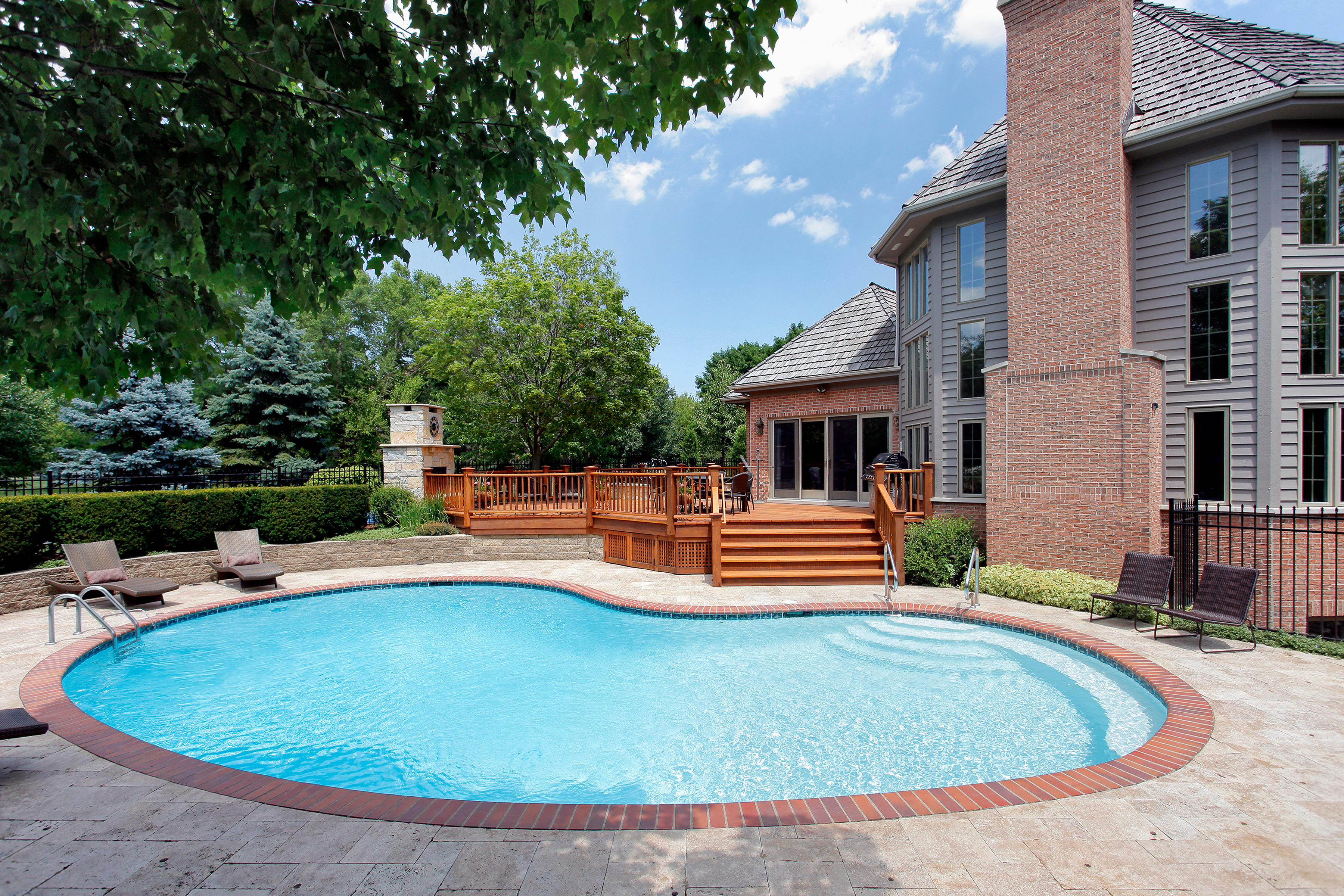
If you’ve been considering installing a new pool in the Buckeye State, this guide will help you understand inground pool costs in Columbus.
When it comes to timing, you’ve got to go with the flow


As your new pool construction trickles toward the finish line, you might wonder how long it takes to fill a pool. Unfortunately, you can’t jump right in. Filling a pool takes a little patience, but the actual timing depends on the pool size and your method. Here’s everything you need to know.

There are two main ways to fill your pool with water: You can use a garden hose or hire a pool water delivery service. Some people also choose to use well water, but only some wells have enough water to fill an average-sized swimming pool, and the water may need additional chemical treatment. Either way, filling a pool can take anywhere from one to 48 hours.
The average garden hose pumps out 8 to 9 gallons of water per minute (though it can vary from 4 to 12 gallons). If you’re wondering how long it takes to fill up a pool with a garden hose, it takes anywhere from 24 to 48 hours to fill an average-sized pool. Of course, this is just an estimate. It will take longer if you have a larger pool or low water pressure.
Since this method does require patience, it’s best for homeowners on a budget, people with smaller pools, or those who want to refill a pool that’s lost water due to evaporation.
Filling your pool with well water requires more planning than using city water. You’ll want to check that the flow rate is 600 gallons per hour or higher so it doesn’t take too long to fill. Make sure that your well has enough water in its reserves to accommodate using 13,000 to 20,000 gallons for the pool.
Keep in mind that an average family uses more than 300 gallons of water per day, according to the U.S. Environmental Protection Agency (EPA). If you’re unsure about your water reserves or are in a drought, it’s best to hold off on using your well. This is a particularly good idea if you have neighbors on wells because you can deplete the water source for your entire area if you’re not careful.
Even then, you should test the water and check for bacteria and contaminants before using it for the pool. While city water is treated at a facility, well water is not, and local contaminants can wreak havoc on your water quality. This in turn can damage your pool equipment.
As long as you cover all of your bases, using your well water is an affordable way to fill your pool.
Believe it or not, you can hire a company to come in and fill your pool. This is the fastest way to fill an empty or near-empty pool. Depending on the pool’s size, a bulk water delivery service may be able to fill your pool in one to three hours.
Since this method costs more than city water, it’s best for homeowners who want to dive in ASAP.
Water pressure is the key to how long it takes to fill a pool with a garden hose. This measurement tells us the force that water travels through our pipes. The higher the water pressure, the quicker the flow rate, and the faster you can fill your pool.
Most homes have a water pressure between 40 and 80 psi (pounds per square inch), but it depends on several factors. Gravity causes water pressure, which is why utility companies store their water in tall water towers. Your home’s water pressure depends on the distance in elevation between your city’s water tank and your home, the width of the pipes in your home, and the width of your hose.

You can figure out your home’s water pressure using a water pressure test gauge. This device will tell you whether or not you have high water pressure (above 80 psi) or low water pressure (below 40 psi)—but the more important figure is the flow rate. The higher the water pressure, the higher the flow rate (unless you have an issue with your plumbing).
Flow rate is measured in gallons per minute (GPM). You’ll need a 5-gallon bucket, calculator, and stopwatch to get this figure. Follow these steps:
Place your garden hose in your 5-gallon bucket.
Press start on your stopwatch while you turn on the hose’s faucet.
Stop the stopwatch as soon as the bucket is full, and note the number of seconds.
Now it’s time for some math (think of it as your own pool fill-time calculator). Divide the number of gallons in the bucket (5 in this case) by the number of seconds it takes to fill the bucket (the number on your stopwatch). Multiply this number by 60—and that’s your GPM.
For example, if your 5-gallon bucket takes 60 seconds to fill, your hose has a GPM of 5. It will take 2,000 minutes—or 33 hours—to fill a small 10,000-gallon pool.
Once you know the hose’s flow rate, you’ll need to determine your swimming pool’s water capacity. A standard pool holds anywhere from 13,000 to 20,000 gallons, but the volume depends on the size. To get the figure, you’ll need to crunch some numbers. The formula varies depending on the shape of your pool.
Tip: If your pool has a shallow end and deep end, use the average depth.
To determine the water capacity of a circular or round pool, use this formula:
Diameter Length (A) x Diameter Length (B) x Depth x 5.9 = Total Gallons
To determine the water capacity of a rectangular pool, use this formula:
Length (A) x Length (B) x Depth x 7.5 = Total Gallons
Learning how to fill a pool with a garden hose is pretty straightforward. Just hook up your hose to the outdoor tap, put the other end of your hose in the pool, and turn on the water. You can use multiple hoses to speed along the process if you have multiple outdoor taps.
Since you need to run the hose for a long period of time, it’s a good idea to make sure someone is home to monitor the process. If something goes wrong—like a hose springing a leak—it could cause major water damage. For this reason, it’s also a good idea to pause the process overnight.
For most homeowners, the cost to fill a pool is between $60 and $1,250. If you do the job on your own with a garden hose, the cost will depend on your city’s water prices. Most people spend $60 to $120, but certain areas have water limits. For example, if you overuse water in California, you could pay a fine of up to $100. Nonetheless, city water is generally the most affordable option at an average of $0.0004 per gallon.
If you plan to hire a pool service, you can expect to spend $175 to $380 per delivery—which can significantly add to the cost of an aboveground pool. Most water delivery trucks can only hold up to 6,000 gallons of water, so you may need a few deliveries. Contact a pool service near you for an estimate.
When budgeting for this project, you might also want to consider why you need to fill your pool. For example, pool repairs can require draining the pool before they can begin. In this case, you’re looking at paying for pool draining on top of the cost of pool repairs.
Very easy to work with. The installers were very efficient.
Great!, Was able to get them to show up within 2 hours of calling, which was very much needed. Had a new refrigerator delivered that could not be installed. The main water shut off to my house and the shut off to the old refrigerator could not be turned off. Water was leaking everywhere...
Excellent! A real pleasure working with everyone involved from the beginning to the end. Garrett on his consulting and ideas during the initial design phase, Kara in the glass selection and cutting, clear through to Jeremy with the installation. All were great!
They were very punctual and on time. I bought the garage door at Menards and the garage door installers came and put it up for me.
The cost is for installing the toilet. I bought the actual toilet. I have not received the bill for the replacement of the faucet yet.
Good, had some initial issues with the installation of the wrong thermostat. Company replaced at no additional charge.
Mr. Siens did a superb job of measuring and installing our granite counter tops, as well as a new sink and disposal. They look beautiful and the craftsmanship was outstanding. He is also a nice man to work with.
From average costs to expert advice, get all the answers you need to get your job done.

If you’ve been considering installing a new pool in the Buckeye State, this guide will help you understand inground pool costs in Columbus.

The cost of pool liner replacement in Columbus depends on the size and shape of your pool, as well as the liner material and type. Here’s how the costs break down.

How much does it cost to fill a pool with water? It depends on the size of your pool and where you’re getting the water. This guide can help you budget.

Our chlorine calculator helps you determine the exact amount of chlorine to add to your pool, based on its volume and your desired parts per million (ppm) level.

Installing a pool? Use this comprehensive pool inspection checklist before taking a plunge.

Dreaming of getting in those daily laps without tearing up your backyard? Here’s what to know about endless pool costs so you can plan your project.